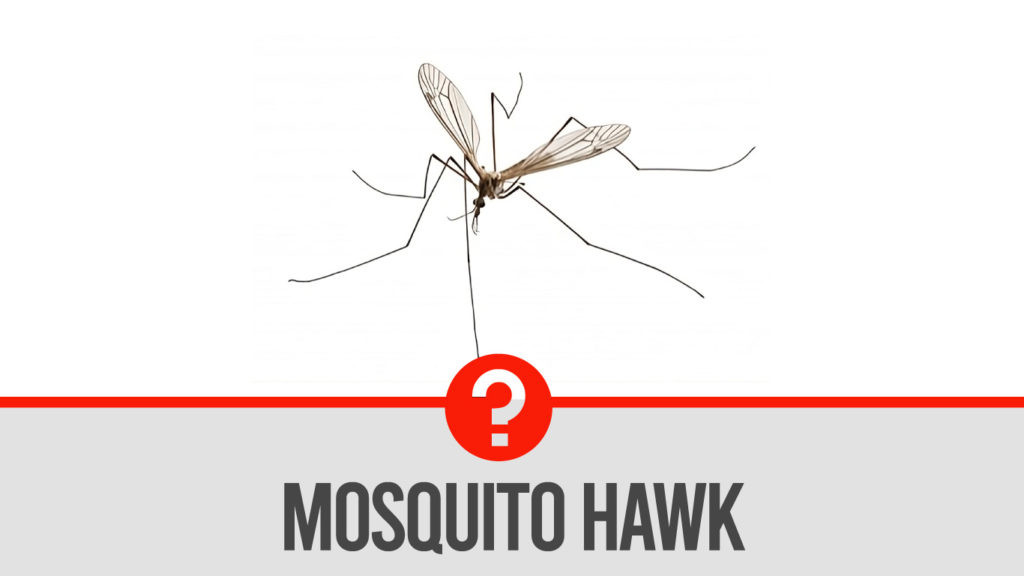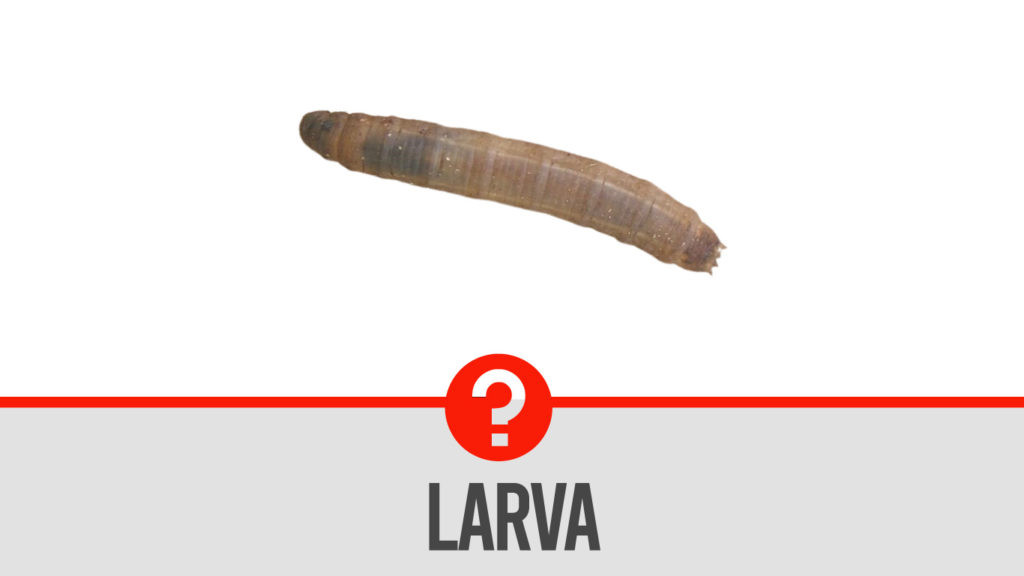Have you ever noticed a large, mosquito-like insect buzzing around and wondered what it is? These often mistaken creatures are likely Crane Flies, and flyermedia.net is here to clear up any confusion. These bugs, sometimes called mosquito hawks, are generally harmless and don’t pose the threat that mosquitoes do. Understanding their characteristics and behavior can help you distinguish them from actual mosquitoes and other pests, ensuring a more peaceful coexistence. Learn about differentiating factors, behaviors, and habitats of these mosquito look-alikes.
1. What Exactly Are These Big Mosquito-Looking Bugs?
The insects you’re seeing that look like giant mosquitoes are most likely Crane Flies, often nicknamed “mosquito hawks.” Despite the intimidating name, Crane Flies are not predators of mosquitoes and are generally harmless. These gangly insects belong to the family Tipulidae and are often found near lights or damp areas.
- Crane Flies vs. Mosquitoes: Crane Flies are often mistaken for mosquitoes due to their similar body shape, but there are key differences. Crane Flies have long, slender bodies and extremely long legs, sometimes reaching up to 1.5 inches in length with a wingspan of 6.5 inches, according to Britannica. Mosquitoes, on the other hand, have a more compact body and shorter legs.
- Harmless Nature: Unlike mosquitoes, Crane Flies do not bite. Some species even lack mouthparts altogether, meaning they can’t suck blood or bite. Instead, adult Crane Flies often focus solely on mating before they die, typically within a few days.
- Life Cycle: Crane Flies, like mosquitoes, require aquatic or damp environments for egg-laying and larval development. This shared habitat preference sometimes leads to them being mistaken for each other.
2. What Do Crane Flies Look Like?
To accurately identify these “giant mosquitoes,” it’s essential to know their physical characteristics.
- Body: Crane Flies have slender, delicate bodies, usually light brown, grey, or tan. The body is segmented, with an elongated abdomen.
- Wings: The wingspan can vary, but generally, they have long, narrow wings held horizontally at rest. The wings are translucent and have prominent veins.
- Legs: True to their nickname “long-legged flies,” Crane Flies have extremely long legs, often two to three times the length of their bodies. These legs are fragile and easily damaged.
- Antennae: They have long, thread-like antennae protruding from their heads.
 Crane fly also known as mosquito eater, mosquito hawk
Crane fly also known as mosquito eater, mosquito hawk
3. What Do Crane Fly Larvae (Leatherjackets) Look Like?
The larval stage of Crane Flies, known as leatherjackets, is quite different from the adult form. Understanding what they look like can help identify them in your garden or lawn.
- Size and Shape: Leatherjackets are elongated and cylindrical, resembling small worms or caterpillars. Their size can range from a few millimeters to several centimeters.
- Colour: The colour varies from pale white, greyish, or brownish to darker shades. Some may have a translucent appearance.
- Body Segments: The larval body is composed of distinct segments with a slightly tougher, leathery texture, hence the nickname “leatherjacket.”
- Head and Mouthparts: At the front end, there is a small head with simple eyes (ocelli) and mandibles used to feed on decaying plant material, vegetation, organic matter, and roots.
- Behaviour: Crane fly larvae are typically found in moist environments, such as damp soil, marshes, or aquatic habitats. They are sometimes considered pests in gardens and lawns because they feed on plant roots.
 Closeup of crane fly larva, showing its segmented body and texture
Closeup of crane fly larva, showing its segmented body and texture
4. What Are the Common Names for This “Big Mosquito”?
It’s easy to get confused by the various names used to describe Crane Flies. Here’s a list of common names you might encounter:
- Jimmy spinners
- Mosquito hawks
- Crane Flies
- Gollywhoppers
- Mosquito eaters
- Mosquito nippers
- Gallinippers
5. Are Crane Flies Harmful?
One of the most common concerns is whether Crane Flies pose any danger. The good news is that they are generally harmless to humans, livestock, and pets.
- No Biting: Adult Crane Flies do not bite or sting. Their mouthparts are not designed for piercing skin or causing harm.
- Larval Impact: While adult Crane Flies are harmless, their larvae (leatherjackets) can sometimes be considered pests in gardens and lawns. They feed on the roots of plants, which can potentially damage crops or ornamental plants.
- Beneficial Aspects: In some ecosystems, Crane Fly larvae can contribute to the breakdown of organic matter, aiding in nutrient cycling.
6. Do Crane Flies Eat Mosquitoes?
Despite their nickname “mosquito hawks,” Crane Flies do not prey on mosquitoes. This is a common misconception that needs clarification.
- Adult Diet: Adult Crane Flies primarily feed on nectar and pollen. Some species don’t feed at all during their adult stage, focusing solely on reproduction.
- Larval Diet: Crane Fly larvae feed on decaying plant material, vegetation, and roots. They do not consume mosquito larvae.
7. How Can You Get Rid of Crane Flies (Mosquito Hawks)?
If you find Crane Flies to be a nuisance, there are several steps you can take to manage their presence.
- Light Management: Crane Flies are attracted to light, so reducing outdoor lighting can help decrease their numbers around porches and patios.
- Habitat Control: Since they require water or damp environments for their life cycle, eliminating standing water and improving drainage can reduce their breeding sites.
- Natural Die-Off: Crane Flies typically have one generation per year, with their presence being more noticeable in early Spring or late Fall. In many cases, waiting a few weeks for the population to die off naturally is the easiest solution.
- Professional Assistance: If Crane Flies are causing significant damage to crops or gardens, consulting with a pest control professional may be necessary.
8. What Is the Difference Between Crane Flies and Mosquitoes?
Distinguishing between Crane Flies and mosquitoes is crucial for understanding the potential risks and appropriate actions.
| Feature | Crane Fly | Mosquito |
|---|---|---|
| Size | Can be up to 1.5 inches long with a wingspan of 6.5 inches | Smaller, typically less than 0.5 inches |
| Body Shape | Slender and delicate | More compact and robust |
| Legs | Extremely long and fragile | Shorter and less conspicuous |
| Wings | Long and narrow, held horizontally at rest | Folded over the back when at rest |
| Mouthparts | Some adults lack mouthparts; others feed on nectar | Females have piercing mouthparts for blood-feeding |
| Biting | Do not bite | Females bite to obtain blood for egg production |
| Disease Vector | Not a vector of diseases | Can transmit diseases like malaria, Zika virus, and West Nile virus |
| Habitat | Damp environments, vegetation | Standing water, damp areas |
| Larvae | Leatherjackets found in moist soil, feeding on roots | Aquatic larvae known as wrigglers |
| Danger | Harmless to humans, may cause minor damage to plants in larval stage | Poses health risks due to disease transmission; bites can cause irritation |
| Appearance | Straight bodies with wings spread out when resting | Humped appearance with folded wings when at rest |
| Diet | Primarily nectar and pollen (adults); decaying plant material, vegetation, and roots (larvae) | Nectar and plant juices (adults); algae, bacteria, and organic matter (larvae); females also require blood meals for egg production |
| Ecological Role | Some larvae contribute to the breakdown of organic matter; adults serve as food source for birds and other insects | Larvae serve as food for fish and other aquatic organisms; adults pollinate plants; can be a food source for some animals |
9. Where Are Crane Flies Commonly Found?
Crane Flies are found in various habitats, typically those that provide moisture and vegetation.
- Geographical Distribution: Crane Flies are found worldwide, with numerous species inhabiting different regions.
- Habitat Preferences: They are commonly found in damp environments such as marshes, wetlands, forests, and grasslands.
- Residential Areas: In residential areas, Crane Flies often congregate around porches, patios, and gardens, attracted to lights and damp conditions.
- Seasonal Activity: Crane Flies are most active during the warmer months, particularly in early Spring and late Fall.
10. Why Are Crane Flies Attracted to Light?
Like many insects, Crane Flies are attracted to light sources, which can explain their presence around homes and buildings.
- Phototaxis: Crane Flies exhibit positive phototaxis, meaning they are drawn to light. This behavior is common among nocturnal insects, which use light as a navigational aid.
- Artificial Lights: Artificial lights, such as porch lights and streetlights, can disorient Crane Flies and attract them to areas where they might not otherwise be.
- Congregation: The attraction to light can lead to Crane Flies congregating around buildings, creating a nuisance for homeowners.
Navigating the Skies with Flyermedia.net
At flyermedia.net, we understand your curiosity about the world of flight and the insects that share our skies. While Crane Flies may not be related to aviation, we’re dedicated to providing accurate information and resources for all things airborne.
If you’re interested in the world of aviation and are based in the USA, specifically in areas like Daytona Beach, flyermedia.net is your go-to source. Whether you’re dreaming of becoming a pilot, fascinated by aircraft, or seeking the latest aviation news, we’ve got you covered.
Ready to take off? Explore flyermedia.net today for a wealth of information on flight training, aviation careers, and more.